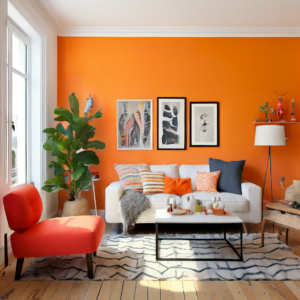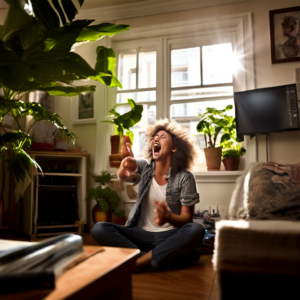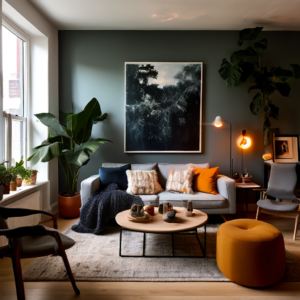Setting up your apartment, the essential tips, it’s like preparing for a long journey, you need the right location, budget, furniture, and kitchenware, it’s all about making your space livable, and a place to call home.
Location, it dictates your commute, did you know that Americans spend an average of 27 minutes commuting to work each day? That’s a lot of time spent on the road or public transit, so you need to pick a place that fits your daily rhythm, a place that doesn’t make your mornings a fight against the clock.
Consider the neighborhood, is it a vibrant hub with cafes and bars, or a quiet retreat with tree-lined streets? The vibe of the neighborhood can shape your daily life, and the feel of the place you live in.
When you start picking your new apartment think of it like picking the right tool for a job, you need the perfect spot, with good access to amenities, and a safe space to relax at the end of the day.
Budgeting for your new space, it is like charting your course in the sea, you can’t just set sail without knowing what you’ll spend.
Rent, that’s your biggest expense, it’s like the anchor that keeps your budget in place, but utilities are there too, electricity, gas, water, the things you need to live.
Utilities costs can vary, but a good estimate can give you control of your monthly budget.
| Expense | Estimated Cost |
|---|---|
| Rent | $1200 |
| Electricity | $80 |
| Gas | $50 |
| Water | $30 |
| Internet | $70 |
| Trash/Sewage | $20 |
Don’t forget the initial furnishing costs, they are important, bed, sofa, kitchenware, they add up.
You need a plan for them, or you may find yourself going over budget quickly.
Remember to build a buffer for unexpected expenses, a broken fridge or medical bills can make you spend a lot of money, you need to have a safety net in your bank account.
Furniture, it’s the backbone of the place you live, the foundation of your space.
The bed, it is essential, a place to rest and recharge after a hard day’s work, the right mattress, soft sheets, and a good pillow are essential.
Then there is the sofa, the heart of the living room, the place where you relax, watch tv, or chat with family and friends, it is the heart of the place you live in.
A dining table, chairs, it makes for a good space to share a meal and good conversation.
Storage, you need it to keep things organized and a desk for work, so you can stay productive.
Kitchen essentials, they are the tools to cook up a home.
Knives, pots, and pans, you need a good set, they are the basics, you also need the tools to stir, scoop and serve, spatulas, spoons, tongs, they all have their role in the kitchen.
And containers, to keep everything fresh and well-organized.
A good coffee maker or a kettle, an essential start to the day.
| Kitchen Essentials | Estimated Cost |
| Knife Set | $100 |
| Cookware Set | $200 |
| Utensils | $50 |
| Storage Containers | $30 |
| Coffee Maker/Kettle | $40 |
The bathroom, it’s about keeping it clean, practical and functional.
A shower curtain or door, that is where you start and end each day, and soft absorbent towels for after a shower.
Don’t forget storage solutions for your toiletries, shelves, drawers, and baskets make the room more organized and the first-aid kit is a must have item in your bathroom.
Setting up your apartment is not a race, it’s like a journey, a process of making a place your own.
Finding the Right Place: Location, Location, Location
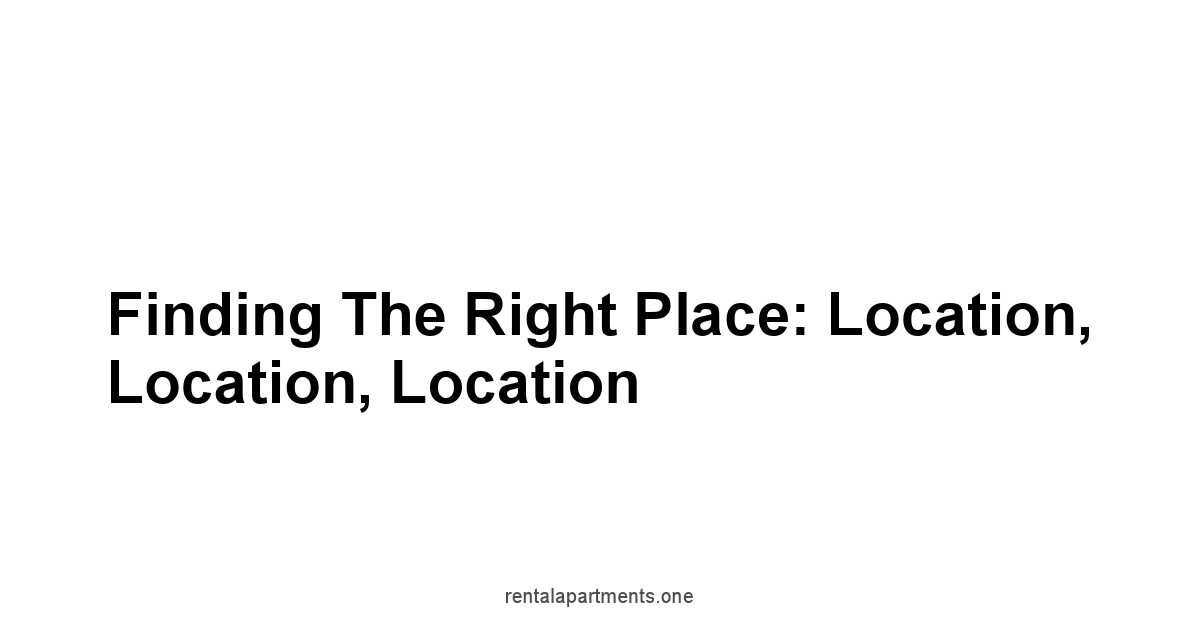
Finding the right apartment, it’s like finding the right fishing spot.
You wouldn’t cast your line just anywhere, would you? It’s about knowing where the fish are. Same with a place to live.
The location, it’s not just a dot on a map, it’s the rhythm of your life, the beat of your day.
You need a spot that fits, that feels like yours, a place where you can hang your hat and be at peace. It’s the base camp for all your adventures.
And finding it? It’s not just about the four walls.
It’s about what’s around, the air you breathe, the sounds you hear, the convenience of what’s close by. It’s about how the place makes you feel.
A good location, it makes your life easier, more enjoyable. A bad one? Well, let’s not think about that.
A place to live is more than just a roof, it’s a feeling, a part of your daily life.
Consider Your Commute
The commute, it can make or break your day.
It’s the first part of the morning and last part of the evening, so you need to get it right.
A long commute can be a real drag, stealing time and energy from your day. Think about how you’ll get to work or school.
Car? Train? Bike? Walking? Map it out, time it, see how it feels.
- Time: How long does it really take to get to your daily destinations? Don’t just trust Google Maps; do a test run.
- Cost: Commuting costs money. Gas, parking, public transit, all adds up. Factor that into your budget.
- Ease: Is it a smooth, straightforward route, or is it full of traffic jams and delays?
- Alternatives: If your car breaks down, can you rely on public transportation or a bike to get to work?
Consider these things and you’ll find your commute doesn’t turn into a daily boxing match against the clock.
Here’s a simple table to help organize your thoughts:
| Commute Method | Time Estimated | Cost Monthly | Ease of Commute | Notes |
|---|---|---|---|---|
| Car | 30 minutes | $150-$300 | Moderate | Traffic can vary |
| Train | 45 minutes | $120-$200 | Easy | Can be delayed |
| Bike | 20 minutes | $0 | Moderate | Weather dependent, some fitness needed |
| Walk | 60 minutes | $0 | Easy | Good for light exercise and if close by |
Assess the Neighborhood Vibe
The neighborhood, it’s your extended living room.
You’re not just buying an apartment, you’re buying into the neighborhood.
Is it a busy spot with cafes and bars, or is it a quiet place with tree lined streets? A place’s vibe is important.
You have to match the lifestyle you have with the place you decide to live in.
- Noise Levels: Can you hear the city at night or is it silent as a tomb? Is there a train line right next door?
- Safety: Do you feel safe walking around at night? Check the local crime statistics. It’s better to be safe than sorry.
- Community: Do you see neighbors out and about? Is there a community feel, or is everyone just passing through?
- Walkability: Can you walk to local stores, parks, and restaurants? The convenience matters.
- Culture: What’s the local flavor? Is there a vibrant arts scene, or is it more of a laid-back, residential vibe?
Neighborhood Vibe Checklist
- Quiet and Peaceful: Ideal for relaxation and concentration.
- Lively and Energetic: Great for those who enjoy a bustling atmosphere.
- Family-Friendly: Parks, schools, and community events are essential.
- Pet-Friendly: Look for green spaces, dog parks, and pet supply stores.
- Close to Nature: Trails, lakes, and green spaces for outdoor activities.
Check for Essential Amenities
Amenities are the backbone of a convenient life. They’re the things that make life easier.
You need to make sure you have access to the things you need, whether it’s a grocery store nearby or a good gym.
These amenities can often make or break a decision.
- Grocery Stores: Having a grocery store nearby makes life easier.
- Pharmacies: Make sure there’s a pharmacy close by, in case you need something urgently.
- Gym or Fitness Centers: If you are active make sure you have access to a gym or fitness center.
- Parks and Recreation: Green spaces can provide a place to relax.
- Public Transportation: Even if you drive, public transport can be useful.
| Amenity | Importance | Why it Matters |
|---|---|---|
| Grocery Store | High | Essential for daily necessities, saving time and money. |
| Pharmacy | High | Crucial for access to health-related needs, including prescriptions and basic medical supplies. |
| Gym/Fitness Center | Medium/High | Promotes health and well-being, providing options for physical exercise and maintaining fitness routines. |
| Park/Recreation Area | Medium | Offers opportunities for relaxation, outdoor activities, and a break from the urban environment. |
| Public Transport | Medium | Allows for convenient travel without relying on personal vehicles, reducing congestion and cost. |
| Coffee Shop | Medium/Low | A great spot to relax with a cup of coffee and work |
Budgeting for Your New Apartment
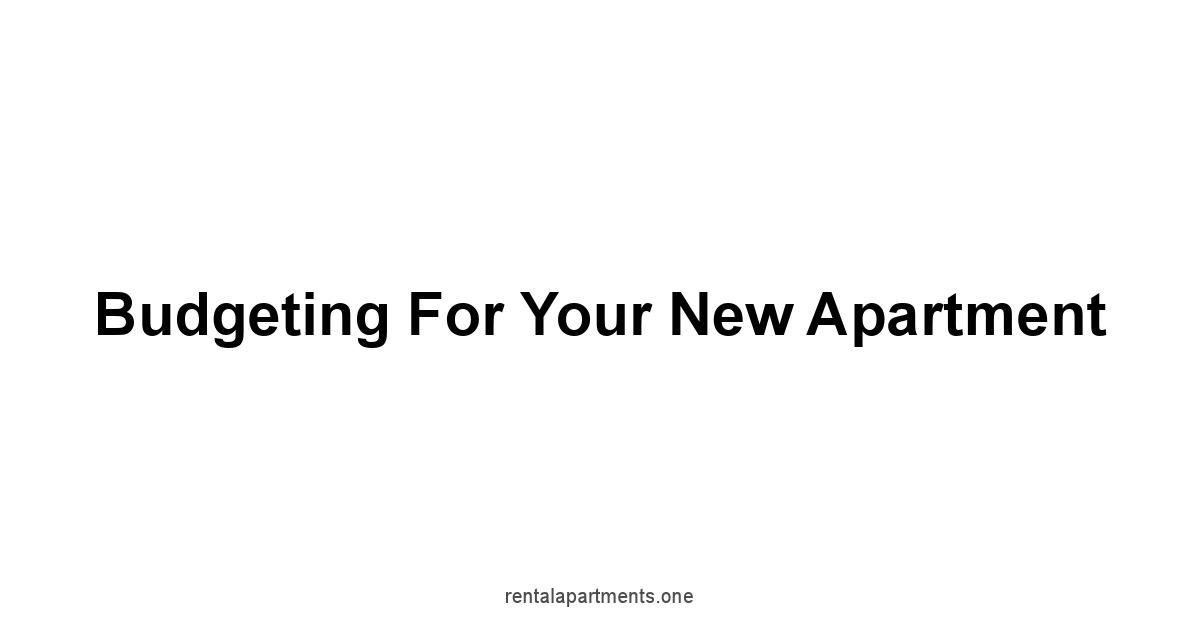
Budgeting for a new apartment is like charting a course for a long voyage.
You can’t just set sail without a map, compass, and knowing what supplies you need.
It’s not just about the rent, it’s everything else that comes along with it: utilities, furnishing, and those unexpected bumps along the road.
If you don’t set up a budget you’ll find you are spending money without thinking about it.
Moving into a new place is exciting, but it can also be expensive.
You need to have a plan, stick to it, and be realistic about what you can afford.
It’s like fishing, you need to know what bait to use to catch the fish you’re after, and you need to be patient.
Your budget is the map that guides you so you don’t spend all your money without a plan.
Calculate Rent and Utilities
Rent and utilities are the main costs of an apartment. They are the fixed costs you can’t avoid.
Rent is usually a large chunk of your budget, but you can manage it.
Utilities can be a bit trickier, as they can vary with the season and your usage.
They’re the water, lights, and heat that you need to keep your apartment running.
- Rent: The single largest housing expense. It’s best to find a place that fits into your monthly budget without stretching it.
- Electricity: Make sure to find out what average electricity costs are for the apartment and use it to adjust your budget.
- Gas: If your apartment uses gas, account for heating and cooking costs.
- Water: Some places have flat water rates, others charge by usage. Check your lease.
- Trash/Sewage: These are usually billed monthly, and they’re important to not forget.
Estimating Utilities Costs:
- Look for estimates provided by the landlord or previous tenants.
- Check with the local utility companies to see average monthly costs in your area.
- Use online calculators to get a general idea of the cost.
Example Monthly Budget:
| Expense | Estimated Cost | Notes |
|---|---|---|
| Rent | $1200 | Can vary depending on the location |
| Electricity | $80 | Can fluctuate with the seasons |
| Gas | $50 | Use this if you have gas for heating |
| Water | $30 | Can be a flat rate or based on usage |
| Internet | $70 | Necessary for most people |
| Trash/Sewage | $20 | Usually fixed |
| Total | $1450 | Total monthly estimate for housing costs |
Don’t Forget Initial Furnishing Costs
Furnishing costs, this can get you if you don’t keep an eye on it.
You can easily spend more on furniture than you intended to.
You need the basic things: a bed, a sofa, a table, but what about the small things? Plates, forks, pots, and pans? It all adds up, and it adds up quickly.
- Prioritize: Start with the essentials and then add from there.
- Budget: Set a realistic budget and stick to it, and don’t try to go over.
- Look for deals: Look for sales, discounts, and second-hand options.
- Don’t rush: It’s better to get good quality pieces than buying the cheapest options that will break down quickly.
- Make a List: Create a list of the furniture items you need, and check if there are items that you already own, or items that you can do without.
Furnishing Checklist
- Bed and mattress
- Sofa
- Dining table and chairs
- Desk and chair
- Dresser or wardrobe
- Kitchenware
- Bathroom accessories
Sample Initial Furnishing Budget
| Item | Estimated Cost | Notes |
|---|---|---|
| Bed & Mattress | $500 | Can be more for higher quality |
| Sofa | $600 | Look for deals and coupons |
| Dining Set | $300 | Consider smaller sets to save |
| Desk & Chair | $200 | Work from home? this is very essential |
| Dresser | $250 | Can be optional |
| Kitchenware | $150 | Don’t overspend at the start |
| Bathroom Accs. | $50 | Essential things for the bathroom |
| Total | $2050 | Estimated total for basic items |
Build in a Buffer for Unexpected Expenses
Unexpected expenses are like a sudden squall in a calm sea, you have to be ready.
You can’t predict everything, there will be costs you didn’t plan for.
Maybe the fridge breaks down or maybe you need to buy something unexpected. Having a financial buffer can be a life-saver.
It’s good to have money set aside for when things don’t go according to plan.
- Emergency Fund: This money should only be for emergencies.
- Maintenance: Things break. Plan for minor repairs and replacements.
- Medical: An emergency trip to the clinic or hospital can cost you.
- Moving Costs: You might need to move again, be ready for it.
Ways to Build a Buffer
- Start with a small amount and add to it regularly.
- Cut down on non-essential spending.
- Set up a separate bank account.
- Be disciplined and don’t touch it unless you need it.
Example Buffer Plan
- Target Buffer Amount: Aim for at least 3-6 months of living expenses.
- Savings Goal: Set a monthly savings goal to reach your buffer amount.
- Tracking: Track your savings to see how you’re progressing toward the goal.
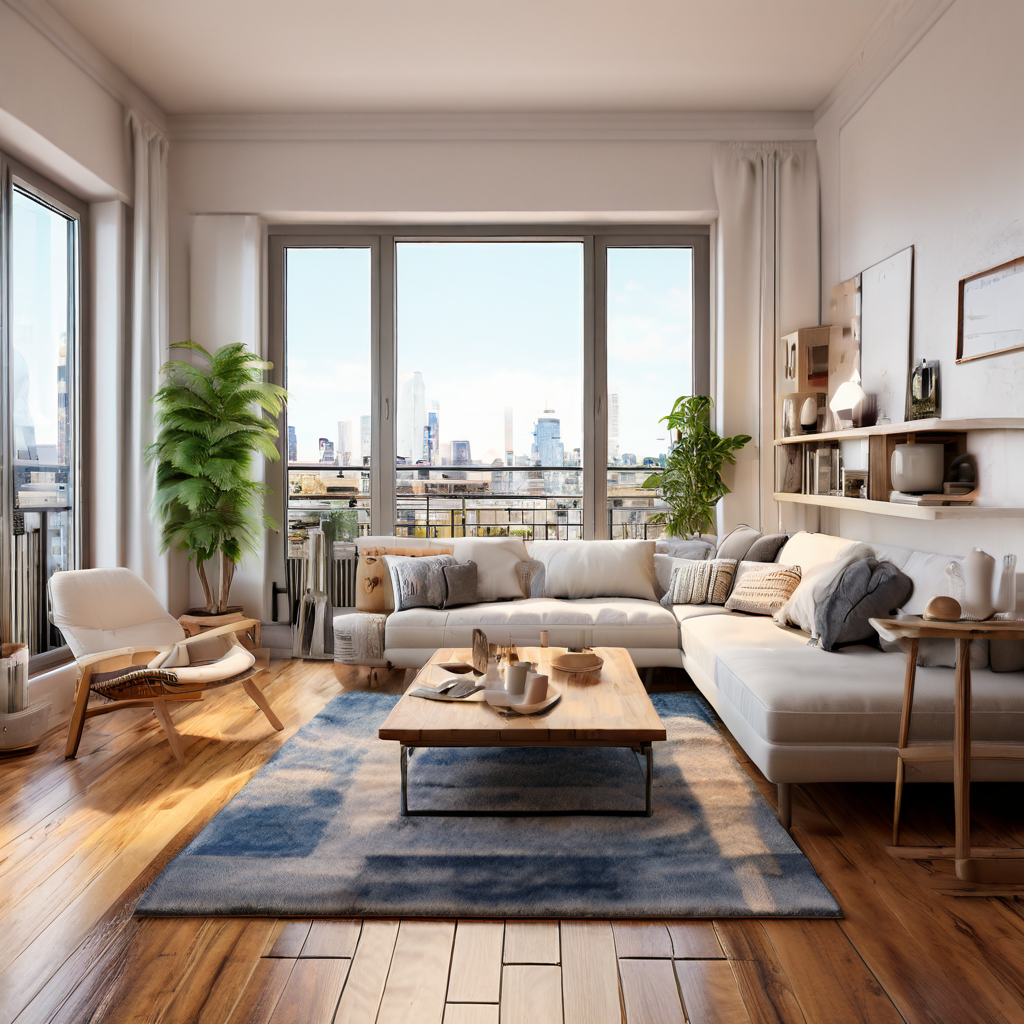
Sample Emergency Fund Goal
| Expense | Amount | Notes |
|---|---|---|
| Monthly Expenses | $1500 | Total monthly costs |
| Buffer Goal 3mo | $4500 | 3 months of expenses |
| Buffer Goal 6mo | $9000 | 6 months of expenses |
| Savings | $100-$200/mo | Monthly savings to reach goal |
Essential Furniture: The Foundation of Your Space
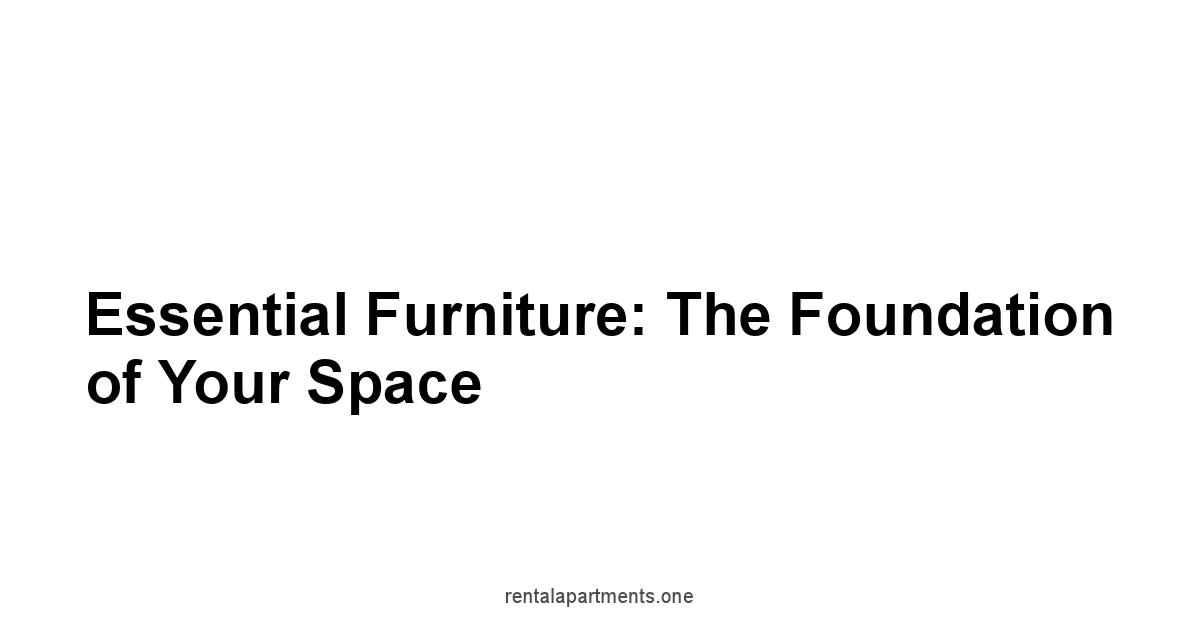
Furniture, it’s the bones of your apartment, the framework that holds it all together.
It’s not just about having a place to sit or sleep, it’s about creating a space that’s functional, comfortable, and reflects your personal style.
It’s about making a house into a home, adding the bits of comfort that make your space yours.
Picking the right furniture, it can feel overwhelming, you have so many choices, different styles, different prices.
But if you stick to the basic pieces, you’ll be able to build up the space you want.
Start with the essentials, and you will have a solid foundation for your home.
Start with a Comfortable Bed
A bed, it’s more than just a place to sleep.
It’s a place of rest, a place to recharge after a long day.
It is an essential piece of furniture, so you need to put some thought into it.
It’s where you spend a third of your life, so you need it to be comfortable.
- Mattress: Go for a mattress that is comfortable for you, don’t pick the cheapest option.
- Frame: Choose a frame that suits your style and the size of your bedroom.
- Sheets: Soft sheets can make all the difference.
- Pillows: Don’t underestimate the importance of a good pillow.
- Blankets: Get blankets that suit your climate and preferences.
Tips for Choosing a Bed
- Size Matters: Choose the bed size that fits your space and your needs.
- Support: Look for mattresses that offer good back and body support.
- Material: Consider the material of the mattress and bedding for comfort and durability.
- Price: You don’t need to spend a lot, but don’t go for the cheapest option either.
- Try It: If possible try out a bed and a pillow before you buy it, to make sure it is the right one for you.
Sample Bed Setup Cost
| Item | Estimated Cost | Notes |
|---|---|---|
| Mattress | $400 | Varies with size and quality |
| Bed Frame | $200 | Choose based on style and space |
| Sheets | $80 | Invest in good quality sheets |
| Pillows | $50 | Get at least two pillows per person |
| Blankets/Duvet | $100 | Choose depending on the season |
| Total | $830 | Estimated cost for bed setup |
A Functional Sofa is Key
A sofa, it’s the heart of the living room, the place where you can relax.
It is a place to unwind, to watch tv, or to talk with friends and family.
You need something that is durable, comfortable, and suits the space.
Think about it as the centerpiece of your living room.
- Size: Measure the space before you buy, make sure it will fit.
- Style: Choose a style that fits your taste and the overall look of your apartment.
- Material: Pick a material that is durable and easy to clean, especially if you have kids or pets.
- Comfort: Sit on it, test it out, make sure it’s comfortable for you.
- Function: Do you need a sofa bed? Or one with storage?
Sofa Selection Checklist
- Space: Measure your room to make sure it fits.
- Style: Choose a design that fits your room’s aesthetic
- Comfort: Make sure it’s comfortable to sit on
- Durability: Choose materials that can stand a lot of use
- Function: Think if you need extra features storage or sofa bed
Types of Sofas:
- Loveseat: Ideal for small spaces, for 1 or 2 people.
- Sectional: Great for larger rooms, provides lots of seating space.
- Sofa Bed: Good for guests and smaller spaces.
- Recliner: Provides extra comfort if you want to relax.
Example Sofa Costs
| Type | Estimated Cost | Notes |
|---|---|---|
| Loveseat | $400 | Good for small apartments |
| Sectional | $1000+ | Higher price, more room, more space |
| Sofa Bed | $600 | Great option for guests |
| Recliner | $300+ | Good for a comfortable lounge area |
Dining Area Must-Haves
The dining area, it’s more than just a place to eat.
It’s where you gather, have meals, where conversations flow.
It doesn’t have to be a big formal space, but it needs to be functional and comfortable.
A good table and chairs can make any meal more enjoyable.
- Table: Pick a table that fits the space and number of people.
- Chairs: Choose chairs that are comfortable and fit the table, both in style and size.
- Lighting: Make sure you have good lighting in the dining area, as it will set the mood for each meal.
- Placement: Arrange the table to allow enough space for comfortable movement and seating.
Dining Area Selection Tips
- Space: Make sure the table fits comfortably in the designated space.
- Size: Choose the right table size for the number of people.
- Style: Select a set that fits with your home’s interior design.
- Comfort: The chairs should be comfortable for long periods of sitting.
Types of Dining Setups
- Small Table: Perfect for small apartments or for 1 or 2 people.
- Standard Set: Usually has a table with 4 chairs, good for a small family.
- Expandable Table: Allows for extra guests and makes space for parties.
- Counter Height Set: Good for more casual dining areas.
Estimated Cost of Dining Area Setup
| Item | Estimated Cost | Notes |
|---|---|---|
| Small Table & 2 Chairs | $250 | Compact and space-saving option |
| Standard Set Table & 4 Chairs | $400 | Good for an average dining area |
| Expandable Table | $600+ | Can accommodate guests and extra people |
| Counter Height Set | $500 | Adds a different style and height |
Storage Solutions Are Non-Negotiable
Storage, it’s the secret ingredient to a clutter-free apartment.
It’s the way you make sure that everything has its place. A cluttered space can be a chaotic space.
Having enough storage can make a huge difference in the overall feeling of your home.
- Shelves: Shelves are perfect for books, decorations, and other items.
- Drawers: Useful for storing clothes, linens, and personal items.
- Cabinets: Good for storing kitchenware, food, and other household items.
- Baskets: Baskets are great for organizing smaller items.
- Multi-functional Furniture: Pieces that serve more than one purpose, like ottomans that open up for storage.
Storage Solution Tips
- Assess your needs: Figure out what you need to store before you buy.
- Utilize vertical space: Shelves are your friend, and you can stack boxes up in a closet.
- Look for hidden storage: Use the space under your bed, and consider ottomans with storage.
- Don’t overbuy: Only buy what you need.
Types of Storage
- Wall Shelves: Save floor space and add style.
- Closet Organizers: Maximize storage space in your closet.
- Storage Bins: Perfect for organizing things in drawers or under the bed.
- Bookcases: Functional and decorative storage for books.
- Drawers: A must have for any bedroom.
Estimated Costs of Storage Items
| Item | Estimated Cost | Notes |
|---|---|---|
| Wall Shelves | $50 | Good for small items and decorations |
| Closet Organizers | $100 | Can be customized for your closet |
| Storage Bins | $30 | Great for small objects and drawers |
| Bookcase | $150 | Can be used as storage and display |
| Drawers | $200 | Good for clothes and personal items |
Don’t Underestimate the Power of a Good Desk
A desk, it’s your command center if you work from home, or a space for focus and creativity.
It’s a place to do work, study, pay your bills, and anything else that needs your focus.
You need a desk that is comfortable, the right size, and serves its purpose.
- Size: Pick a desk that fits the space without being too large or too small.
- Comfort: A comfortable desk can make a huge difference when you spend a lot of time at it.
- Ergonomics: Make sure it is at the right height for you.
- Storage: Look for desks with drawers or storage shelves.
Desk Selection Tips
- Purpose: Decide what you need the desk for.
- Size: Make sure you measure and that it is not too big or too small.
- Style: Match the style of the desk with your home.
- Material: Pick a sturdy material that is durable and long lasting.
Types of Desks
- Writing Desk: Simple desk good for writing, or using a laptop.
- Computer Desk: Desks with extra features to fit a monitor and other computer accessories.
- Standing Desk: Good for health and for those who do not want to sit all day.
- L-Shaped Desk: Maximizes your corner space and gives you more desk space.
Estimated Costs of Different Desks
| Desk Type | Estimated Cost | Notes |
|---|---|---|
| Writing Desk | $100 | Simple, good for basic needs |
| Computer Desk | $150 | Extra features for computer equipment |
| Standing Desk | $250+ | Great for a healthier workday |
| L-Shaped Desk | $300+ | Maximizes corner space |
Kitchen Essentials: Cooking Up a Home
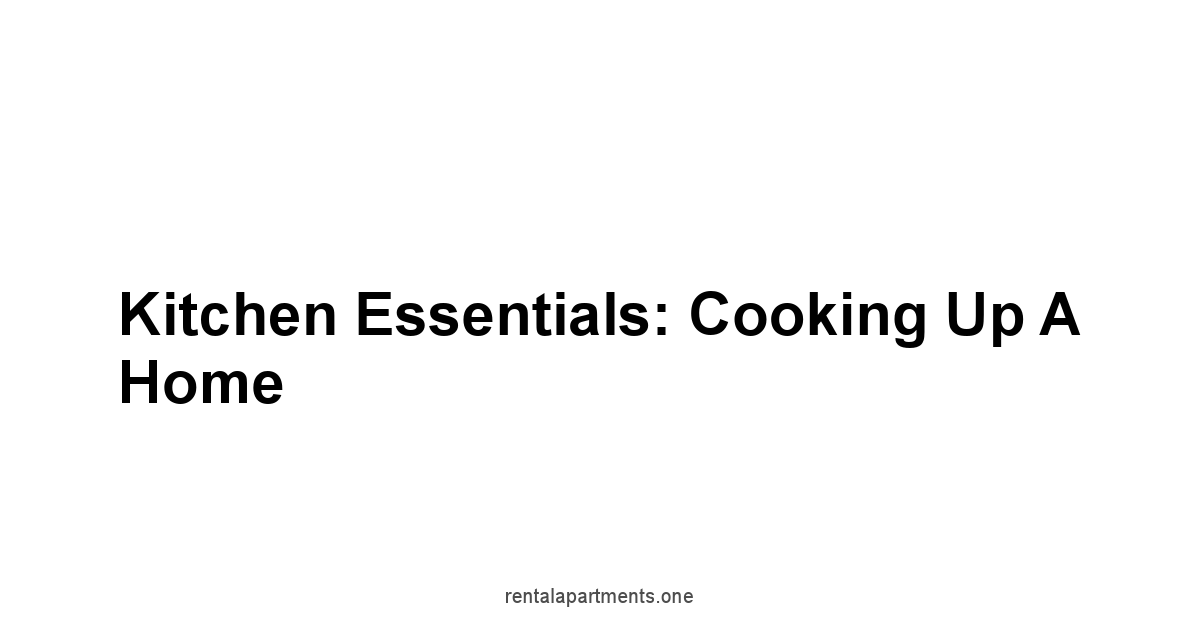
The kitchen, it’s the heart of the home.
It’s where meals are prepared, stories are shared, and life happens.
You need to make sure you have what you need in the kitchen to make meals and not make a mess.
A good kitchen is a well-stocked kitchen with the tools you need to cook, clean, and enjoy your home.
Getting your kitchen set up can feel like a big task, but if you break it down, it is not too bad.
You need to get the basics and you can build on it as you go. You don’t have to buy everything at once.
It’s a process, a journey of creating your kitchen.
Knives, Pots, and Pans: The Basics
Knives, pots, and pans, they are the tools of your kitchen.
They’re the things you use to cook up everything from a simple breakfast to an elaborate dinner.
You need them to be reliable, durable, and able to handle anything you throw at them.
- Knives: Get a set with a chef’s knife, a paring knife, and a serrated bread knife.
- Pots: A stockpot, a saucepan, and a frying pan are good to have.
- Pans: Choose non-stick pans and cast iron for best results.
Tips for Choosing Knives and Cookware:
- Material: Stainless steel is good for knives. Non-stick, or cast iron for pots and pans.
- Quality: Invest in good quality that will last.
- Variety: Don’t get too many, just get what you will use regularly.
- Maintenance: Make sure they’re easy to clean.
Essential Knife and Cookware List
- Chef’s Knife
- Paring Knife
- Serrated Bread Knife
- Stockpot
- Saucepan
- Frying Pan
Estimated Cost of Knife and Cookware Sets
| Item | Estimated Cost | Notes |
|---|---|---|
| Knife Set | $100 | Choose a set with basic knives |
| Basic Cookware Set | $200 | Stainless steel or nonstick set |
| Good Quality Set | $400+ | Get if you want a high end kitchenware |
The Right Utensils Make a Difference
Utensils, they’re the extensions of your hands in the kitchen.
They are what you use to stir, flip, scoop, and serve.
Having the right utensils can make cooking easier and more enjoyable.
They’re tools you’ll use every day, so getting good quality is worth it.
- Spatulas: For flipping, stirring, and scraping.
- Spoons: For stirring sauces and serving food.
- Tongs: For grilling and serving food.
- Whisk: For beating eggs and mixing batters.
- Ladle: For serving soup.
- Measuring Cups and Spoons: Essential for baking and following recipes.
Tips for Choosing Utensils:
- Material: Choose utensils that are heat-resistant and durable.
- Grip: The handle should be comfortable to hold.
- Variety: Get a variety to cover all cooking needs.
- Easy Cleaning: Make sure they are easy to wash, by hand or dishwasher.
Utensil Checklist
- Spatula
- Wooden Spoon
- Tongs
- Whisk
- Ladle
- Measuring cups and spoons
Estimated Cost of Kitchen Utensils
| Utensil Type | Estimated Cost | Notes |
|---|---|---|
| Basic Utensil Set | $50 | Includes essentials tools |
| Premium Utensil Set | $150+ | High-quality materials |
| Individual Utensils | $5-$20 | Buy single items as needed |
Don’t Forget Storage Containers
Storage containers, they’re your kitchen’s secret weapon against mess and food waste.
They’re essential for storing leftovers, dry goods, and other food items. You need them to keep your kitchen organized.
Good storage containers will help keep your food fresh and your kitchen organized.
- Airtight Containers: Keep food fresh.
- Glass Containers: Good for storing leftovers.
- Plastic Containers: Lightweight and stackable, good for everyday use.
- Variety of Sizes: Have containers of different sizes to accommodate different storage needs.
Tips for Choosing Storage Containers
- Material: Choose between plastic, glass, or stainless steel, depending on your needs.
- Airtight: Make sure the containers are airtight to keep food fresh.
- Stackable: Stackable containers save space.
- Durability: Choose containers that are durable and long-lasting.
Storage Container Checklist
- Airtight Plastic Containers
- Glass Containers
- Variety of Sizes
- Reusable food bags
Estimated Costs of Storage Containers
| Container Type | Estimated Cost | Notes |
|---|---|---|
| Plastic Containers | $30 | Good for daily use and stacking |
| Glass Containers | $50 | Good for leftovers and heating |
| Airtight Containers | $40 | Keeps food fresh for longer |
| Set of Mixed Sizes | $50+ | Includes different sizes for various needs |
A Good Coffee Maker or Kettle is Essential
A coffee maker or a kettle, they’re not just appliances, they’re morning essentials. They’re what you need to get the day started.
Whether you’re a coffee lover or a tea drinker, you need the right tool for the job.
They help you make your favorite hot drink for the start of your day, or to unwind at the end of the day.
- Coffee Maker: Choose between a drip coffee maker, a French press, or a single-serve machine.
- Kettle: For tea, pour-over coffee, or instant noodles, a kettle is a must have.
- Filters: Make sure you have the right filters for your coffee maker.
- Accessories: Coffee grinders, and other extras can enhance the experience.
Tips for Choosing a Coffee Maker or Kettle
- Frequency: How often will you use it?
- Capacity: How many cups will you make?
- Type: Do you like coffee, tea, or both?
- Ease of use: Is it easy to operate and clean?
Coffee Maker and Kettle Checklist
- Coffee Maker
- Kettle
- Coffee Filters
- Coffee grinder optional
Estimated Cost of Coffee Maker and Kettle
| Item | Estimated Cost | Notes |
|---|---|---|
| Drip Coffee Maker | $40 | Simple and easy to use |
| French Press | $30 | For the purist coffee drinker |
| Single-Serve Machine | $100+ | Good for individual cups of coffee |
| Electric Kettle | $30 | Quick and easy way to heat water |
| Stovetop Kettle | $20 | Simple, classic kettle |
Bathroom Necessities: Keeping it Clean and Functional

The bathroom, it’s a space of function and cleanliness. It’s where you start and end your day.
It needs to be practical, organized, and a comfortable place. You need to make it a space that works for you.
Setting up your bathroom, it’s about getting the essentials right.
It’s about having the things you need to keep clean and organized.
It’s not always the most glamorous room, but it is an essential part of your home.
Shower Curtains or Doors
Shower curtains or doors, they’re not just about keeping water inside the shower, they’re about privacy and style.
They’re an essential part of your bathroom, and will make a big difference in the feel of the space.
You have to choose what you need based on your bathroom setup.
- Shower Curtain: Cost-effective and easy to install.
- Shower Curtain Liner: Prevents water from leaking out and mildew from growing on your curtain.
- Shower Doors: Look great, but can be more expensive, and require professional installation.
- Rod: Make sure you have a rod that is easy to install and sturdy.
Tips for Choosing Shower Curtains or Doors:
- Size: Make sure it fits your shower or tub properly.
- Material: Choose a material that is easy to clean and resistant to mold.
- Style: Pick a style that goes well with the rest of your bathroom decor.
- Installation: Consider ease of installation if you go for doors.
Shower Setup Checklist
- Shower Curtain or Doors
- Shower Curtain Liner
- Shower Rod
Estimated Costs of Shower Setups
| Item | Estimated Cost | Notes |
|---|---|---|
| Shower Curtain | $20 | Simple, easy to install, cost-effective |
| Shower Curtain Liner | $10 | Essential to prevent mildew |
| Shower Rod | $15 | Needs to be sturdy and the right size |
| Shower Doors | $200+ | More expensive and requires professional installation |
Towels: Soft and Absorbent
Towels, they’re a basic but important part of your bathroom.
They’re what you use to dry off after a shower or a bath.
They need to be soft, absorbent, and durable, you use them all the time. They can make all the difference in your routine.
- Bath Towels: Larger towels for drying off your body.
- Hand Towels: Smaller towels for drying hands.
- Washcloths: Small cloths for washing your face and body.
- Material: Choose cotton or microfiber for softness and absorption.
Tips for Choosing Towels
- Material: Choose a material that is absorbent and soft.
- Size: Get the right sizes for your needs, bath towels, hand towels, and washcloths.
- Color: Pick colors that match your bathroom decor.
- Durability: Make sure they can last a long time.
Towel Checklist
- Bath Towels
- Hand Towels
- Washcloths
Estimated Costs of Towels
| Item | Estimated Cost | Notes |
| Bath Towel | $15 | Need a few for different use |
| Hand Towel | $10 | Get as many as you need |
| Washcloths | $5 | Get a couple of washcloths |
| Towel Set | $50+ | A good option to get matching towels|
Storage Solutions for Toiletries
Storage solutions for toiletries, it’s about keeping everything organized in your bathroom.
You have soaps, shampoos, lotions, and many other items that you use every day.
Having the right storage is important to make sure it’s not a mess. It helps make the bathroom more functional.
- Shelves: Wall shelves or under-sink shelves for storing toiletries.
- Drawers: Great for keeping small items organized.
- Baskets: For storing extra towels, soaps, and other items.
- Shower Caddy: Keeps shampoos and soaps within reach in the shower.
- Mirror with Storage: Good way to add a mirror and some storage space.
Tips for Choosing Bathroom Storage
- Space: Utilize vertical space by adding shelves.
- Organization: Make sure everything is easy to access.
- Style: Make sure that all storage items fit with the bathroom style.
- Durability: Choose durable storage items that are easy to clean.
Bathroom Storage Checklist
- Shelves
- Drawers
- Baskets
- Shower Caddy
- Mirror with Storage optional
Estimated Costs of Storage Solutions
| Item | Estimated Cost | Notes |
|---|---|---|
| Bathroom Shelves | $30+ | Great way to add extra storage |
| Under Sink Storage | $20 | Good for storing cleaning supplies |
| Baskets | $10 | Great for storing extra toiletries |
| Shower Caddy | $15 | Must have for a functional shower |
| Mirror with Storage | $50+ | Functional and good for saving space |
A First-Aid Kit is a Must
A first-aid kit, it’s not just something you should have, it is essential
Final Thoughts
The journey of setting up your first apartment, it’s a big one.
Like charting a course across the ocean, you’ve got to plan, prepare, and be ready for a few storms.
It’s more than just gathering furniture and finding a place to sleep, it is about creating a home that fits your life.
This is your space, and it should be as comfortable and as functional as possible.
From finding the perfect location that fits your commute to creating a kitchen that’s ready for your culinary experiments, every detail matters in making this place your home.
Budgeting, it’s the keel of your ship. Without a solid plan, you’ll find yourself adrift.
You need to know where every dollar goes, from the rent to the unexpected expenses.
A well-thought-out budget is not a constraint, it’s your map, ensuring you can enjoy your new space without constant financial worries. Think of it as the fishing line.
If you don’t measure the length correctly, you won’t be able to reach the big fish you are looking for.
And let’s not forget about the furniture, they’re the bones of your space.
Pick wisely and you’ll have a place that isn’t just functional, but that tells your story.
A good bed, a comfortable sofa, a well-set dining area, these are not just pieces of furniture, they are the foundation of your new home.
And finally, the kitchen and bathroom.
These are the spaces where daily life happens, so make sure they are equipped with everything you need.
Stock your kitchen with the tools to whip up a quick meal, organize your bathroom, and make it a calm and clean place to start and finish your day.
A well-equipped kitchen, from a good set of knives to useful storage containers, makes the process of meal prep feel not like a chore but an enjoyable activity.
And your bathroom should be a place where you can keep everything organized and clean.
Setting up an apartment, it’s a challenge, but it’s a rewarding one.
According to a recent survey, 78% of people feel that their home environment significantly impacts their overall happiness and productivity.
By focusing on these essential tips, you can create a space that doesn’t just feel like an apartment, but a home where you are happy and comfortable.
As you continue on this journey, remember to take it one step at a time, be patient, and enjoy the process of making a place that feels truly yours.
Frequently Asked Questions
What is the most important thing to consider when finding an apartment?
Location, it’s the rhythm of your life.
You need a spot that fits, a place where you can be at peace.
It’s more than four walls, it’s the air you breathe, the sounds you hear.
How important is commute when looking for a place?
The commute, it can make or break your day. Think about how you’ll get to work or school.
Car? Train? Bike? Walking? Time it, see how it feels.
What should I think about when looking at the neighborhood?
Is it busy or quiet? Do you feel safe walking around at night? A place’s vibe is important, match your lifestyle with the place you live.
Why is it so important to look for essential amenities?
Amenities, they are the backbone of a convenient life.
What should I consider when budgeting for a new apartment?
Budgeting for a new apartment is like charting a course.
You need to have a plan, stick to it, and be realistic about what you can afford. Don’t spend all your money without a plan.
How can I manage my rent and utilities?
Rent and utilities are the main costs of an apartment.
Utilities can vary, look for estimates provided by the landlord or previous tenants.
What should I consider when buying new furniture for my new apartment?
Furnishing costs can get you if you don’t keep an eye on it. Start with the essentials and then add from there. Make a list, don’t rush, and look for deals.
Why do I need an emergency fund?
Unexpected expenses are like a sudden squall in a calm sea, you have to be ready. Having a financial buffer can be a life-saver. Things break. Plan for minor repairs and replacements.
What are the essential furniture pieces I need when starting out?
A bed, it’s more than just a place to sleep. A sofa, it’s the heart of the living room. A dining area, it’s more than just a place to eat.
Storage, it’s the secret ingredient to a clutter-free apartment. And a desk if you need a space to focus and work.
How important is the kitchen when setting up my apartment?
What are some kitchen essentials I need when starting out?
Utensils are the extensions of your hands in the kitchen. Storage containers keep your kitchen organized.
A coffee maker or a kettle, they’re morning essentials.
Why is it important to set up the bathroom with the right essentials?
It needs to be practical, organized, and comfortable.
What do I need for the bathroom when I am setting up my apartment?
Shower curtains or doors, they’re not just about keeping water inside the shower.
And a first-aid kit, it’s not just something you should have, it is essential.


